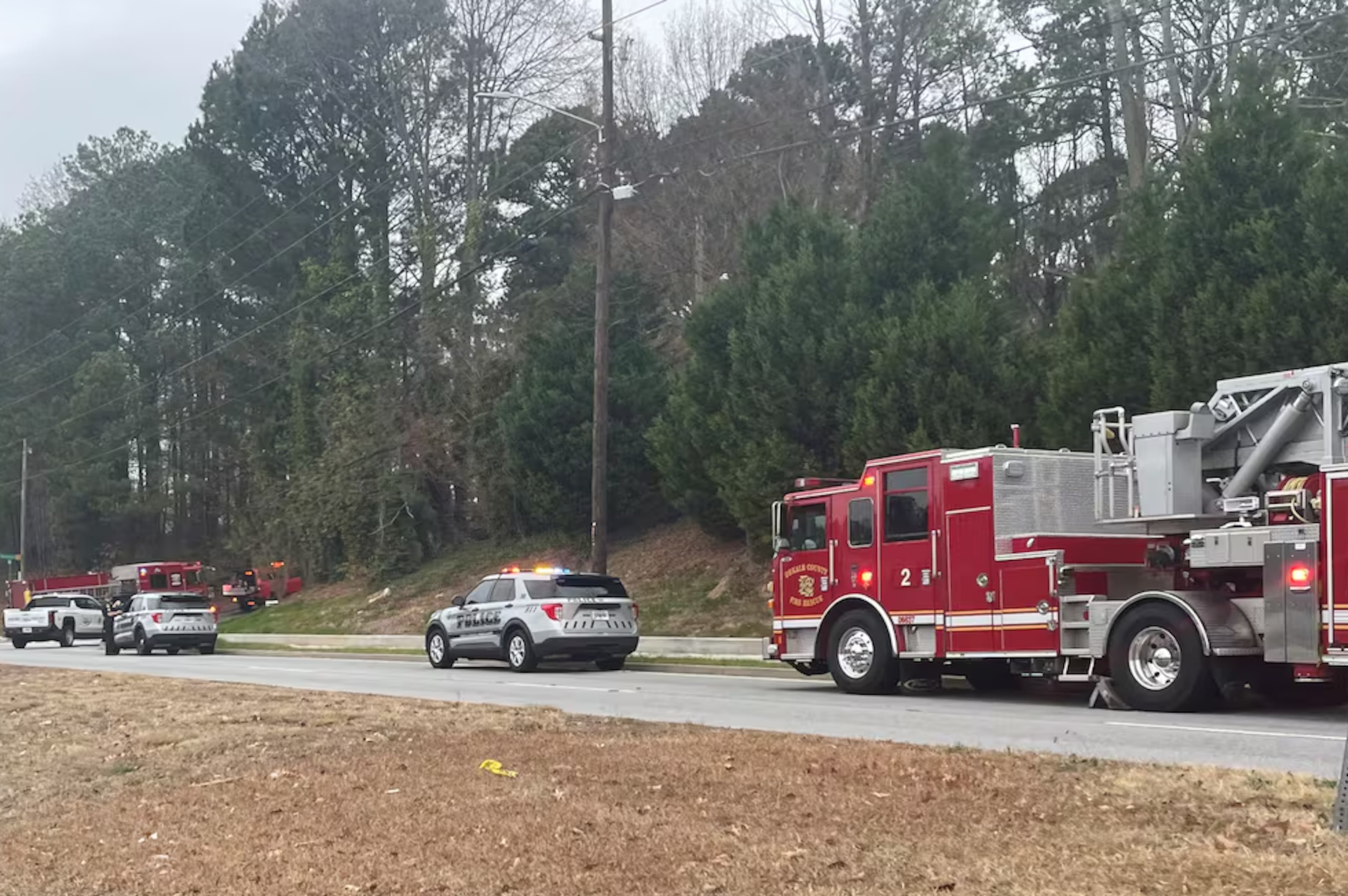New I-75 express lanes to speed up traffic — at a price

If you want to see how the state plans to solve Atlanta’s traffic problems, drive down I-75 just south of the city next weekend.
There, dead center in the median between the north and southbound lanes, lies the solution: 11.5 miles of brand new reversible toll lanes, opening next Saturday, that will speed up the ride for drivers willing to pay. Taxpayers poured $226 million into the I-75 South Metro Express Lanes, and the state Georgia Department of Transportation is just getting started.
Express lanes — the state calls them "express lanes," regular people call them "toll lanes" — are GDOT's answer to the mess you confront on the roads every day. Commuters from Cobb, Cherokee and Bartow counties have watched the 30-mile Northwest Corridor project unspool down I-75 — more reversible toll lanes at a cost of $834 million million that will open next year. After that: toll lanes on the top-end Perimeter and up Ga. 400 through Fulton and Forsyth counties.
“This is a glimpse of what the future looks like,” Georgia Department of Transportation Commissioner Russell McMurry said of the I-75 lanes opening on Jan. 28.

Not everyone is happy about that future.
Former Henry Commission Chairman Tommy Smith worries the new lanes will enable customers to bypass hotels, restaurants and other county businesses. He also fears drivers unfamiliar with reversible lanes will get into more accidents, and that emergency vehicles will have a hard time getting to wrecks on the lanes.
“The express lanes are probably going to end up being the worst nightmare GDOT ever had,” Smith said.
Henry County Commissioner Bruce Holmes called the new lanes “a band-aid” to Henry’s traffic woes.
“Hopefully, it works but I don’t see it being a true solution for Henry County,” Holmes said.
About 75 percent of Henry residents drive to Atlanta for work. Holmes said Henry needs a combination of managed lanes such as the express lanes and mass transit — specifically a rail line that runs from Atlanta to Henry — to fix the county’s traffic problems.
Still, some commuters welcomed the new lanes. John Koth of McDonough drives an hour each way to his job in Hapeville. He hopes the new lanes will save him 40 minutes of driving a day.
“The weekends are pretty much a parking lot on 75,” Koth said. “I’ll be able to spend more time with my family on the weekend. This option will make it much easier for us.”
New to Georgia
Georgia already has some reversible lanes, like Atlanta's DeKalb Avenue (also known locally as the "suicide lane"). But reversible toll lanes – used to manage rush-hour traffic in cities like Tampa and Washington – are new to the Peach State.
The I-75 South Metro Express Lanes stretch from McDonough Road to Stockbridge Highway, nestled in the median of the existing lanes and separated from them by barriers. They will carry vehicles toward Atlanta in the morning and out of town in the afternoon.
Transit and emergency vehicles will have free use of the lanes. Other motorists must have a Peach Pass to use them, and they'll pay 10 cents to 90 cents per mile, depending on the traffic.
The price goes up as traffic increases. The idea is to make the price high enough to discourage everyone from using them – and to keep traffic moving at 45 mph or more.
Toll rates will be displayed on overhead signs, so drivers will know how much they’re paying before they enter the lanes. The maximum toll for the 11½ miles will be $10.40 during peak traffic; the minimum price for any trip will be 50 cents.
Chris Tomlinson, executive director of the State Road and Tollway Authority, which sets the price, expects light use of the lanes initially. That should mean an initial toll of as little as 10 to 15 cents a mile.
As more people use them, the typical charge will likely increase to 35 cents a mile at rush hour – or about $4 one-way for the entire 11.5-mile stretch, Tomlinson said.

The opening of the I-85 toll lanes in Gwinnett in 2011 caused an uproar. That’s in part because the agency converted two existing high-occupancy vehicle lanes to toll lanes – in effect taking away lanes of traffic from most drivers unwilling to pay (the I-85 toll lanes are still free for vehicles with three or more people, motorcyclists and electric vehicles).
The I-75 lanes are new and will add capacity to an often-congested stretch of highway that carries some 145,000 vehicles a day.
The lanes are expected to shave six to 12 minutes each way off the average trip, GDOT estimates. At rush hour the savings could be higher. Even those stuck in the general purpose lanes are expected to save a few minutes as other drivers take the toll lanes.
Local residents and business owners expressed varied opinions about the new lanes. Stockbridge resident Gene Coltfelter welcomed them. “I think it’ll help traffic and provide some relief,” he said.
But Nat Patel worries that the new lanes will hurt his business. He owns a 40-room Econo Lodge off Exit 218, right in the middle of the new project.
Business picks up for Patel around March and October, when snowbirds from Canada and northern states make their yearly pilgrimage to Florida.
Drivers in the toll lanes will not be able to get off at Patel’s exit.
“It’ll impact revenues,” he said.

Reversing direction – carefully
So how do you reverse the direction of traffic on a major highway carrying hundreds of thousands of vehicles? Very carefully.
First, at about 11:30 a.m. or noon each weekday, overhead signs will alert motorists that the lanes are closing. This begins the transformation from northbound lanes to southbound lanes for the evening rush.
Then SRTA operators will close a series of gates – at least three and as many as seven, depending on the location – behind vehicles already in the lanes. Sensors will alert employees at GDOT’s Transportation Management Center when cars are still present. But GDOT Highway Emergency Response Operators also will drive the routes to ensure no vehicles or debris remain on the road.
When they get the all-clear, operators will open the gates for traffic moving the other way.
The whole process will take up to two hours. It will be repeated at around midnight to prepare for the morning commute.
If it sounds like a lot of work, consider what would happen if the lanes were reversed prematurely, opening them to hundreds of vehicles while someone was still driving in the opposite direction.
“We’re going to be very thorough with it,” said GDOT spokeswoman Jill Goldberg.
The state has taken other steps to protect drivers. If there’s an accident on the express lanes, emergency vehicles will be able to access them via special gates every half-mile. And SRTA spokesman Matt Markam said there will be plenty of signs to alert drivers so they don’t get in the lanes by mistake.
“We want you to use the (express lane) option,” Markham said. “But we don’t want you to use it by accident.”


